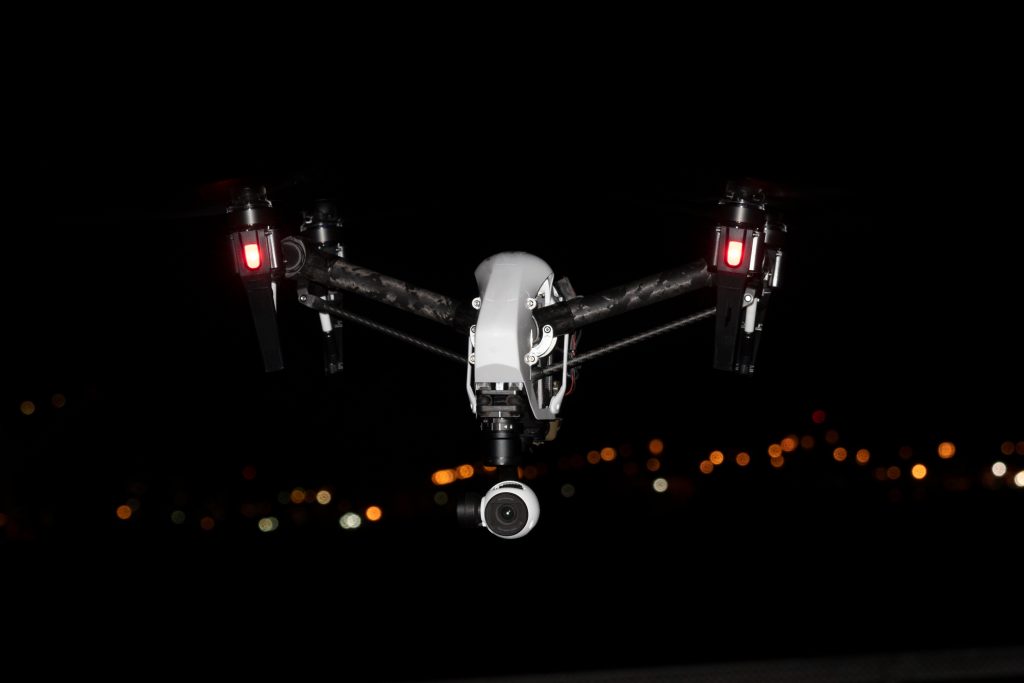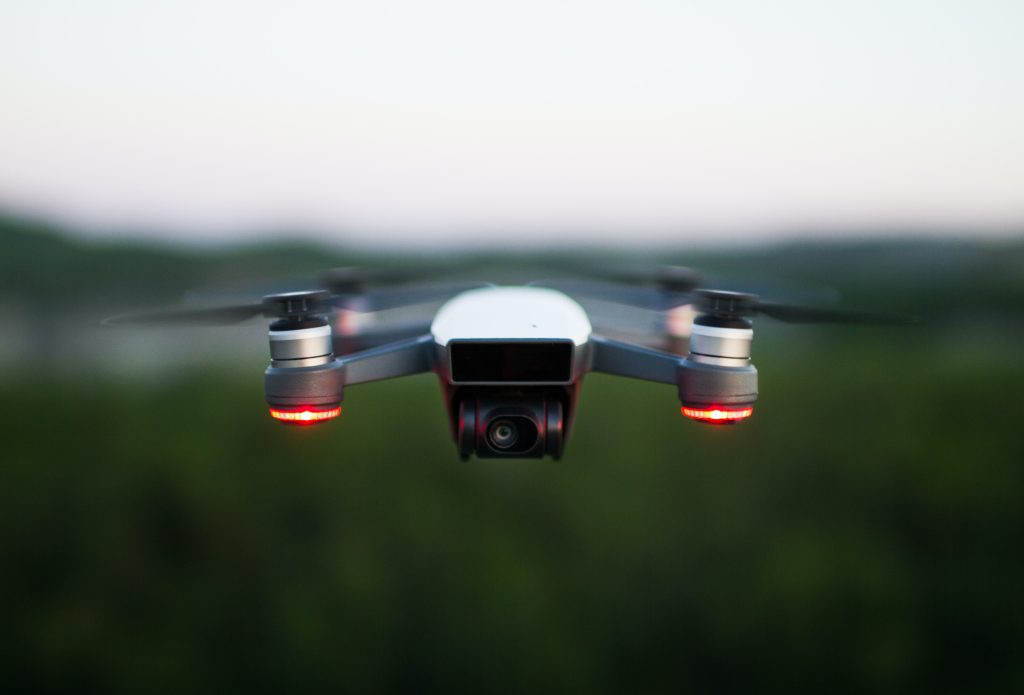In recent years, drones or unmanned aerial vehicles(UAV) have become an increasingly common sight in the sky. They are used for a wide range of purposes, from delivering packages to capturing aerial footage for films and television shows.
There has been a significant increase in the number of drones seen flying at night. You may have noticed them hovering above your neighborhood or darting between buildings in the city.
It might be very uncomfortable for you to see drones outside your windows or on your property at night.
But why are there drones in the sky at night, and what are they being used for?
In this blog post, we will explore the reasons behind the rise of nighttime drone use and other questions that comes with it. So, buckle up and let’s take a closer look at why drones are taking flight under the cover of darkness.
Should I be worried Drones being used at night?

It is understandable to be concerned about the use of drones at night, especially if you are uncomfortable with the idea of drones flying near your property.
However, it is important to note that the vast majority of drone operators use their drones in a safe and responsible manner, and the use of drones at night is subject to strict regulations and guidelines.
Most drones are noisy. Even if they are being used to track you, you can easily detect drones by their sound. Therefore you can take the actions you can take. Probably might ignore the drone or go to a safer distance. Keep in mind not all drones are noisy. There might be some exceptions.
Also, you can spot drones by seeing the light in the drone. A lot of time, police and other similar types of flying drones have light in them.
If you are still concerned about drones being used near your property, there are several steps you can take to address these concerns.
For example, you can contact your local authorities or drone operators directly to discuss your concerns and request that they take steps to minimize noise or avoid drone flying over your property.
Additionally, you can take steps to protect your privacy, such as installing fences or curtains to prevent drones from capturing images or videos of your property.
By taking appropriate steps to address your concerns and protect your privacy, you can help ensure that the use of drones does not interfere with your quality of life.
Reasons Why are there Drones in the Sky at Night
Surveillance
Drones equipped with high-resolution cameras and other sensors are increasingly used for surveillance and security purposes.
Law enforcement agencies, private security firms, and even homeowners use drones to monitor large areas, detect intruders, and gather evidence.
In some cases, drones are equipped with night vision cameras and thermal imaging cameras. Cameras like thermal can detect heat signatures, making them particularly effective in locating people or animals at night. Mostly, police drones have those features so that police officers can detect criminals in the dark.
Governmental Reason
Governments also use drones for a wide range of purposes, including military operations, border surveillance, and disaster response.
In many cases, these night drones are equipped with specialized sensors and equipment that enable them to operate in low-light or nighttime conditions.
Delivery
Drone delivery services are becoming more common, particularly in urban areas. Drones can navigate through traffic and avoid congestion, making them an efficient way to transport goods.
Some companies are now using drones to make deliveries at night when traffic is lighter and delivery times can be faster.
Recreational Purposes
Consumer drones are also being used at night for recreational purposes. Drones equipped with high-resolution cameras and LED lights can capture stunning aerial footage of cityscapes, landscapes, and even wildlife.
Nighttime photography and videography have become increasingly popular, and drones offer a unique perspective that is hard to replicate with traditional cameras.
Inspection
Drones equipped with specialized cameras and sensors are being used for inspection purposes at night.
For example, drones can be used to inspect power lines and wind turbines, which are difficult and dangerous to inspect manually. Nighttime inspections can be particularly useful in detecting faults or issues that may not be visible during the day.
Search and Rescue
Drones equipped with thermal imaging cameras and other sensors can be deployed at night to assist in search and rescue operations. These drones can detect heat signatures and other clues that can help locate missing persons or other individuals who may be in distress.
Environmental Monitoring
Drones are also being used for environmental monitoring purposes, including air quality monitoring and wildlife tracking. In some cases, drones equipped with specialized sensors can detect pollutants and other environmental hazards that may be present at night.
Infrastructure Maintenance
Finally, drones are being used for infrastructure maintenance purposes, including bridge and tunnel inspections. These inspections are typically conducted at night when traffic volumes are lower, and drones can be deployed quickly and easily to inspect hard-to-reach areas.
Scientific Research
Drones can be used for scientific research. One of the main advantages of using drones for scientific research at night is that they can collect data and imagery in environments that are difficult or dangerous for human researchers to access.
For example, drones can be used to study nocturnal animals, monitor wildlife populations, or survey remote areas that are difficult to access by foot or vehicle.
Drones can also be used to collect data on environmental factors such as temperature, humidity, and air quality, which can help researchers better understand the impacts of climate change and other environmental factors on ecosystems and wildlife.

Can you use a Drone at Night?
Yes, drones can be used at night, but there are certain regulations and guidelines that must be followed to ensure safe and responsible drone operation.
In many countries, including the United States, the use of drones at night is subject to specific regulations and requirements.
In the US, the Federal Aviation Administration (FAA) regulates the use of drones under Part 107 of the Federal Aviation Regulations. Under these regulations, drone operators are permitted to drone fly at night, but they must first obtain a waiver from the FAA.
To obtain a waiver, operators must demonstrate that they have the necessary training and equipment to conduct nighttime operations safely.
In addition to obtaining a waiver, drone operators must also ensure that their drones are equipped with appropriate lighting and anti-collision systems.
Specifically, drones must have anti-collision lights that are visible for at least three statute miles and must be able to be seen from all directions. The lighting must also be sufficient to allow the operator to maintain visual contact with the drone at all times.
Operators must also comply with other regulations, including restrictions on flying over people, flying near airports, and flying beyond visual line of sight. Failure to comply with these regulations can result in fines and other penalties.
Conclusion
I hope now you know why drones fly at night.
From surveillance and delivery to agriculture and environmental monitoring, drones are being used for a wide range of purposes, both commercial and non-commercial.
While the use of drones at night can raise concerns about privacy, noise, and safety, it is important to note that the vast majority of drone operators use their drones in a safe and responsible manner, and the use of drones at night is subject to strict regulations and guidelines.
As drone technology continues to advance and new use cases emerge, it is likely that we will see even more innovative applications for drones at night.
However, it is important for drone operators, regulators, and the public to work together to ensure that drones are used in a way that is safe, responsible, and respectful of the rights and privacy of others.
Important Links:
https://www.ecfr.gov/current/title-14/chapter-I/subchapter-F/part-107

